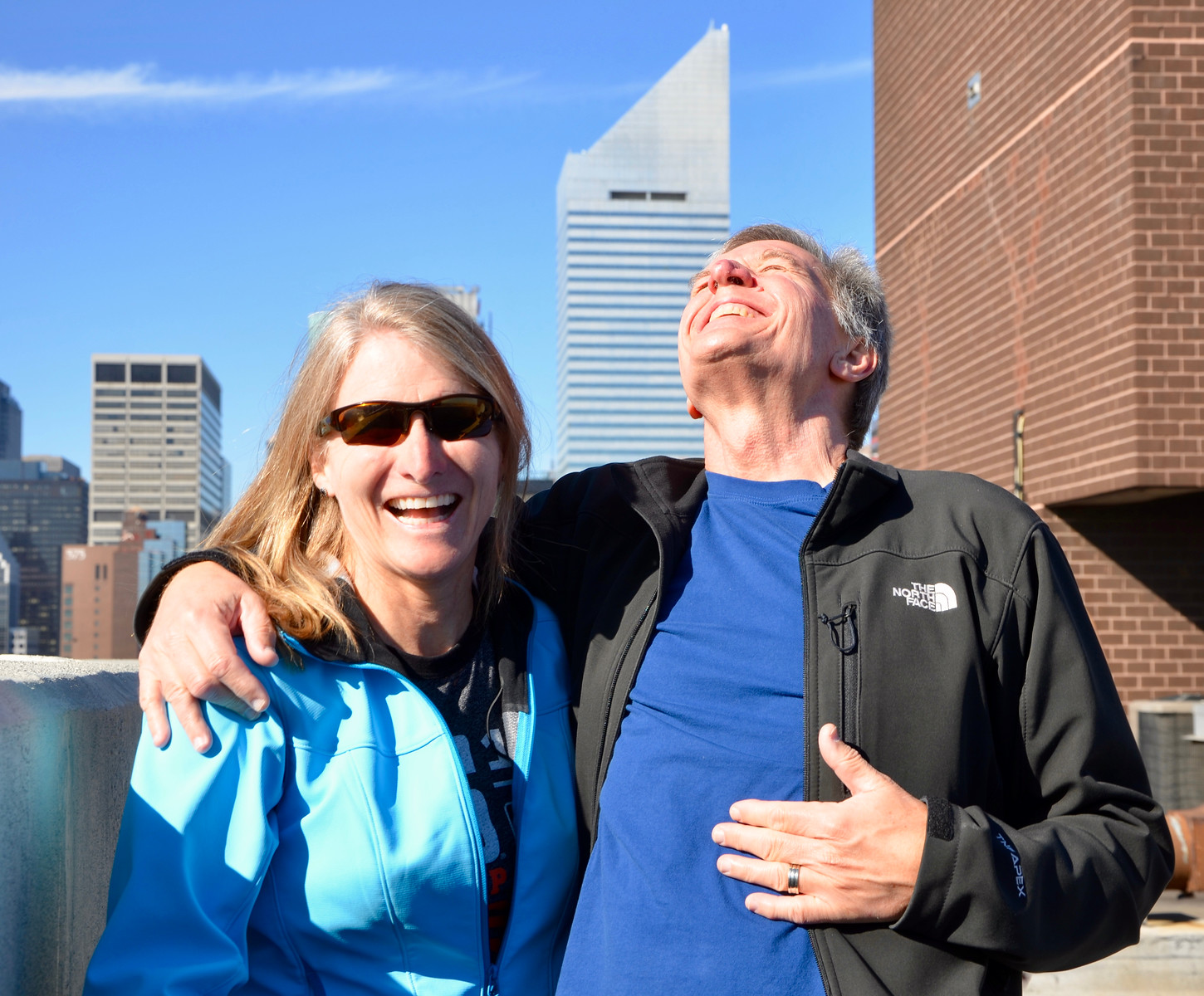Last summer, during a conference call, a co-worker from Iowa mentioned what he was doing for the weekend: rappelling down the tallest building in Des Moines after raising money for Special Olympics and being filmed by a local television station for being the top fundraiser. While others on the call were telling him how crazy he was, I wanted to know if they did it in San Francisco because I’d be the first to sign up. Six months later, in January, we signed up on the day the registration website went live. Waiting until July 23rd to “plummet to our deaths” was going to be hard.
During the week leading up to the event, neither of us tried to think much about it. One of us because he would get too excited and think of nothing else, the other because she didn’t want to think of falling to her death at such a young age. When the big day finally arrived, we drove into San Francisco on a gloriously beautiful day. We arrived in Union Square, a popular shopping and tourist area, where the Grand Hyatt towers high above. As we approached the hotel, we saw tourists pointing to the sky and shading their eyes. They were watching rappellers climbing down the side of the hotel. This would be us in about two hours.

Resisting the urge to turn around and go home, we went inside to register for our final act on Earth.

We signed a waiver with the word DEATH interspersed throughout it, were given Special Olympics wristbands, then led to the top floor of the hotel where we met our friend Sean who checked our wristbands and marked us off on his list. Sean is a big teddy bear who made sure that the tourists who were enjoying lunch in the adjoining restaurant didn’t try to sneak in, slip into rappelling gear, and dash up to the rooftop. We waited around with Sean and took in the spectacular views from the panoramic windows before being led into another room where we were outfitted with the gear we would be buried in. After they scraped us off of the cement 400 feet below. The big orange work gloves would be a nice touch in my coffin. I should also mention that Sean is a friend who works for the coroner’s office and assured us that he’d take personal charge of our remains. It’s great to have friends in high places.
Once outfitted, there was more waiting. We could see the people ahead of us rappelling down the side of the building, adding to the excitement/terror of the moment. Finally, we were led up the maintenance stairwell to the rooftop, where we were told to walk on the “mats” along the perimeter of the roof. I had visions of stepping off of the mats and falling through the ceiling. Great. One more thing to worry about. When we popped out onto the roof, the crisp air and unobstructed views of San Francisco were spectacular and much more adrenaline pumping than the same views from inside the hermetically sealed 36th floor below.

We were led to a mock-up of the emergency brake on a rope, where we were assured that the brake would engage if we descended too fast or got tangled up. How fast is too fast, I wondered? We were shown how to release the brake (wave our arm sideways to alert the rope handlers at the bottom, wait for them to create some slack in the rope, then tap the emergency brake to go again). I wondered “how will they distinguish between arm waving for the emergency brake thing and generic panicked arm waving”? After getting the emergency brake tutorial, we were told to climb up another set of stairs onto the roof of a utility structure in the middle of the roof. Yes, we climbed ABOVE the roof. We were met by a nice Over The Edge crew member who gave us a brief rappelling lesson. Yes, our first lesson was on a roof ABOVE the roof. Great. Quick practice session rappelling twenty feet DOWN to the roof, then it was over to the corner of the building for the big show. As we waited our turn in line, we watched our fellow mental patients get hooked in and disappear over the edge of the roof. Yikes. This also gave us a chance to take in the views a little longer. We could look at the Golden Gate Bridge, Coit Tower, the Financial District, and the clock on the centerfield scoreboard inside AT&T Park. Or pretend that we were standing in the backyard on a sunny day.
Finally, it was our turn to be strapped in. We were given final instructions, much like a death row inmate being told what to expect when he walks into the chamber. Step up on the ledge, turn your back to the building, walk backwards until the arches of your feet are on the building edge, pivot back until you’re perpendicular to the building, start walking down. Stop along the way and enjoy the moment. Piece of cake.


What you notice when hanging from a rope with your feet on the side of a very tall building in the heart of a major city is how quiet it is. There’s a stillness that’s remarkably peaceful. The only sounds are the wind blowing and your heart pounding.



Crazy. Insane. Nuts. Batty. Cracked. Demented. Idiotic. Mad. Mental. Psycho. Unhinged. Awesome!





















